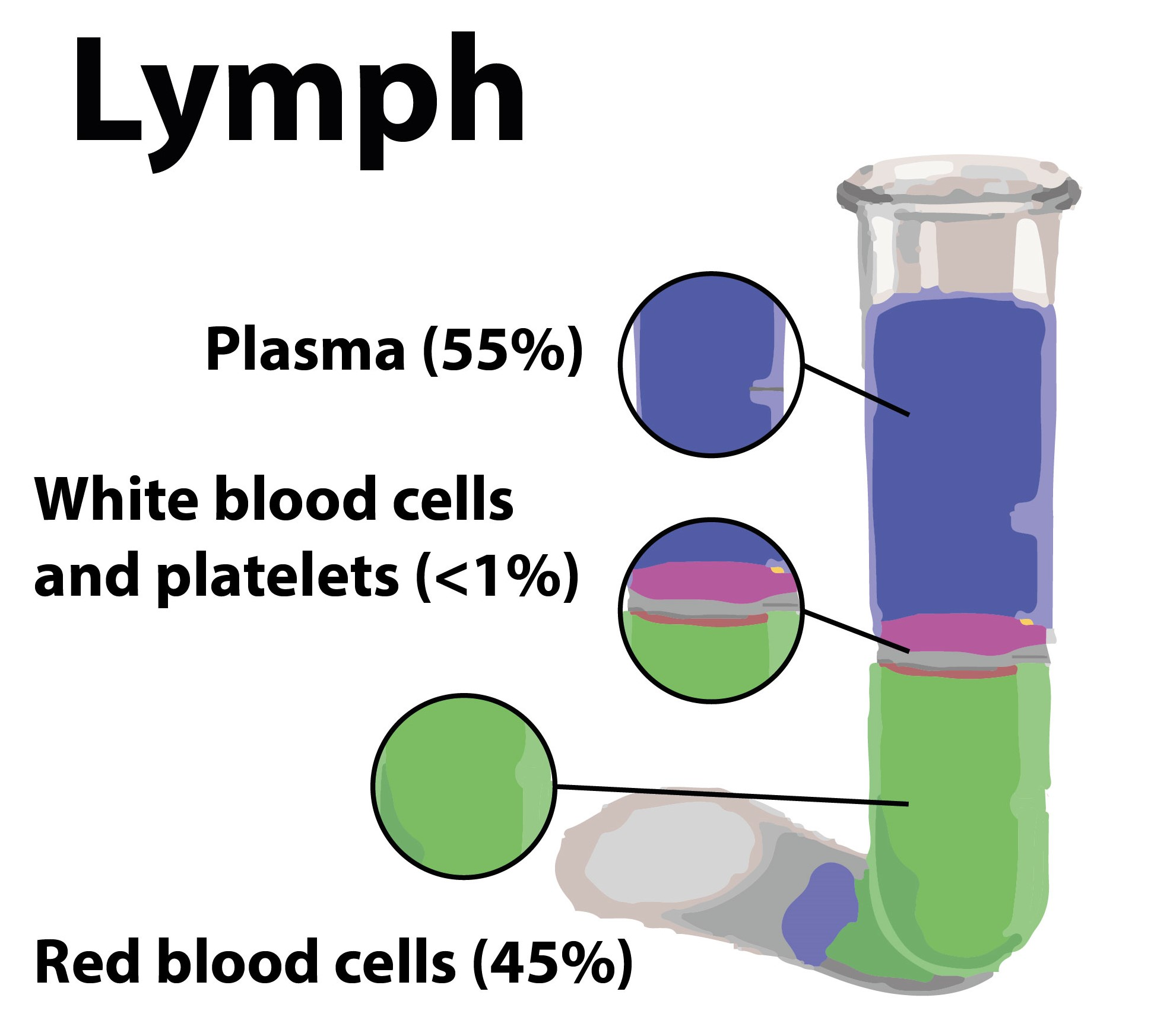
The color of lymph is.
A. Red
B. Pale yellow
C. Colorless
D. Milky
Answer
572.1k+ views
Hint: Lymph comprises all the components of the blood except the red blood cells. It is the liquid part of the blood and is the most important constituent of the blood that mainly constitutes water.
Complete answer:
The lymph or tissue fluid is a colorless fluid containing specialized cells called lymphocytes. Lymph is the fluid that mingles through the lymphatic system. The interstitial fluid that is found in between all the body tissues forms lymph that originates from the lymph capillaries. It is a clear yellow colored watery fluid that contains lymphocytes and proteins.
Additional Information: -The lymph returns additional proteins and fluids to the bloodstreams. As there are some delicate spaces within the tissues of our body where blood can't reach directly. Hence the liquid part of the blood laterally with the white blood cells (WBCs) and the oxygen comes out of the capillaries.
-This fluid is known as tissue fluid, which is pale yellow or colorless. The tissue fluid delivers nourishment and nutrition to those tissues where blood can not reach. Now the tissue fluid doesn’t reach the heart via the vena cava.
-This tissue fluid after losing oxygen and other nutrients are directed to the specialized cells called lymph vessels. Hence the improved tissue fluid flows through the lymph vessels and lymph nodes in the clear yellow lymph.
-Lymphocytes are the cells of WBCs that are responsible for the production of antibodies and hence providing immunity to our body.
-Lymph is also an important carrier which carries nutrients, hormones, etc. In RBCs pigment hemoglobin accounts for the red color of the blood.
-Lymph also transfers fats from the digestive system to the blood via chylomicrons in specialized vessels called lacteals. Lymph vessels along with lymph nodes constitute the lymphatic system.
-If somehow any bacteria enters the lymph, it is transported to the lymph nodes where it gets destroyed. Lymph nodes are home to the important immune cells of our body.
-In arthropods we find lymph as the main fluid constituent of the body, it is also called hemolymph. Metastasis can occur easily through the lymph nodes.
So, the correct answer is ‘Pale yellow’.

Note: Our immune system constitutes two main kinds of cells B lymphocytes and T lymphocytes also known as B killer cells and T helper cells these two cells constitute our humoral immunity. Lacteals are located in the villi of the small intestine where fat digestion mainly occurs. There are four types of WBCs in our body: monocytes, lymphocytes, neutrophils, basophils, eosinophils. Metastasis is the spreading of cancer to the different parts of the body.
Complete answer:
The lymph or tissue fluid is a colorless fluid containing specialized cells called lymphocytes. Lymph is the fluid that mingles through the lymphatic system. The interstitial fluid that is found in between all the body tissues forms lymph that originates from the lymph capillaries. It is a clear yellow colored watery fluid that contains lymphocytes and proteins.
Additional Information: -The lymph returns additional proteins and fluids to the bloodstreams. As there are some delicate spaces within the tissues of our body where blood can't reach directly. Hence the liquid part of the blood laterally with the white blood cells (WBCs) and the oxygen comes out of the capillaries.
-This fluid is known as tissue fluid, which is pale yellow or colorless. The tissue fluid delivers nourishment and nutrition to those tissues where blood can not reach. Now the tissue fluid doesn’t reach the heart via the vena cava.
-This tissue fluid after losing oxygen and other nutrients are directed to the specialized cells called lymph vessels. Hence the improved tissue fluid flows through the lymph vessels and lymph nodes in the clear yellow lymph.
-Lymphocytes are the cells of WBCs that are responsible for the production of antibodies and hence providing immunity to our body.
-Lymph is also an important carrier which carries nutrients, hormones, etc. In RBCs pigment hemoglobin accounts for the red color of the blood.
-Lymph also transfers fats from the digestive system to the blood via chylomicrons in specialized vessels called lacteals. Lymph vessels along with lymph nodes constitute the lymphatic system.
-If somehow any bacteria enters the lymph, it is transported to the lymph nodes where it gets destroyed. Lymph nodes are home to the important immune cells of our body.
-In arthropods we find lymph as the main fluid constituent of the body, it is also called hemolymph. Metastasis can occur easily through the lymph nodes.
So, the correct answer is ‘Pale yellow’.

Note: Our immune system constitutes two main kinds of cells B lymphocytes and T lymphocytes also known as B killer cells and T helper cells these two cells constitute our humoral immunity. Lacteals are located in the villi of the small intestine where fat digestion mainly occurs. There are four types of WBCs in our body: monocytes, lymphocytes, neutrophils, basophils, eosinophils. Metastasis is the spreading of cancer to the different parts of the body.
Recently Updated Pages
Master Class 12 Business Studies: Engaging Questions & Answers for Success

Master Class 12 Economics: Engaging Questions & Answers for Success

Master Class 12 English: Engaging Questions & Answers for Success

Master Class 12 Maths: Engaging Questions & Answers for Success

Master Class 12 Social Science: Engaging Questions & Answers for Success

Master Class 12 Chemistry: Engaging Questions & Answers for Success

Trending doubts
What is meant by exothermic and endothermic reactions class 11 chemistry CBSE

Which animal has three hearts class 11 biology CBSE

10 examples of friction in our daily life

One Metric ton is equal to kg A 10000 B 1000 C 100 class 11 physics CBSE

1 Quintal is equal to a 110 kg b 10 kg c 100kg d 1000 class 11 physics CBSE

Difference Between Prokaryotic Cells and Eukaryotic Cells




